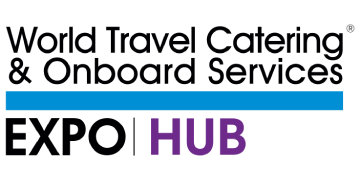Travel nutrition and the future of healthy food on board – why bother?

Melissa Adamski APD MND BSc
Travel Dietitian and Director Nutted Out Nutrition
Ambassador for WTCE 2025 in Travel Nutrition
Food and nutrition are popular topics, especially since the advent of the internet and social media. There are 67 million results for #nutrition on Instagram alone and typing nutrition into Google yields 1,100,000,000 results (as of beginning December 2024).
And while many assume the large interest in food and nutrition suggests everyone must want ‘healthy food’ this is not always the case with the pathway forward for the travel industry where it is less clear as to the role nutrition should play in onboard catering. As travel nutrition ambassador for WTCE, I wrote an article for the 2024 expo exploring this dichotomy of nutrition in the travel industry and how we can begin to explore integrating more nutritious food concepts onboard.
However, with conversations (and debates) about the role of nutrition and diets in the wider travel industry continuing to get louder there is then the question on many in the industry’s minds… why should we bother?
As a dietitian working within the corporate and business sectors for most of my career this is a common question – why should businesses bother considering nutrition in their strategies and offerings? In this follow-up article I explore considerations for the travel industry, particularly airlines and onboard catering, in regard to nutrition playing a more prominent role in food and beverage services.
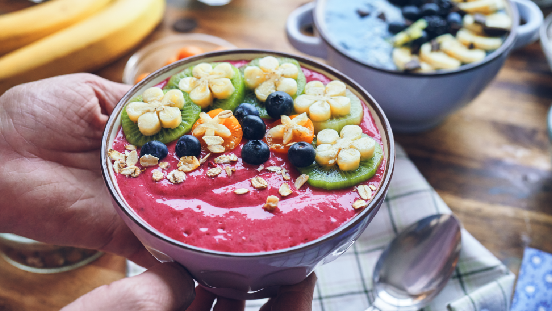
Innovation and culinary nutrition
Nutrition science is constantly evolving. While the thought of nutrition brings to mind images of green smoothies and pretty Instagram pictures, nutrition science is actually a hard science just like physics or biology. Advances in nutrition science research are beneficial for innovation within the airline industry in assisting passengers feel their best after travel. Jet lag and diet, gut health, hydration, immunity and inflammation are exciting areas of nutrition science just ripe for innovation in the industry.
In the hospitality industry nutrition science is your friend, not a handbrake to food development and innovation. After being hijacked by the diet industry for so long, mentioning nutrition can send shivers down the spines of many in the food industry with the assumption that dietitians and nutritionists want to strip out taste and enjoyment in the pursuit of balancing calories and macronutrients. However, nothing could be further from the truth.
Consuming nutrient rich foods are important, and anyone who has spoken to me will know I like to talk about getting ‘bang for your buck’ when it comes to foods, as some foods offer much more in terms of nutrition than others. However, only thinking about calories and nutrients is not what healthy food is all about. Pleasure and enjoyment with eating is also important – food needs to taste good. Enter the area of culinary nutrition – where nutrition, food science and culinary arts all intersect and produce a powerful, innovative food and meal development team.
In fact, the Taste of Travel Theatre at 2024 WTCE had a lively discussion on culinary nutrition led by the fantastic Steve Warpol. Leveraging nutrition science can provide exciting opportunities for innovation within onboard services.
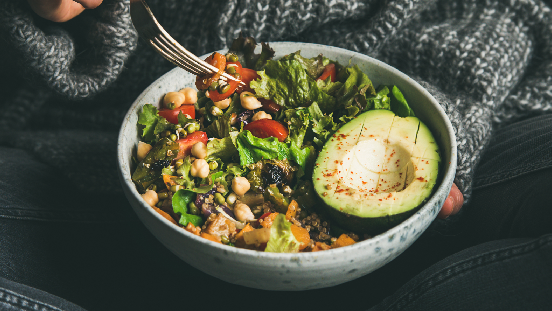
Inclusivity
Making flying more inclusive for all is an important discussion within the travel industry, with solutions for improving physical accessibility at airports and onboard being a focus. However, there are also elements of food service while flying that present challenges for people.
Food allergies, food packaging, sensory aspects of food, people with PEGs (tube feeding), and pregnancy, are some examples of areas of nutrition and dietetics for airlines and caterers to consider within their food service offerings to help make flying an enjoyable and accessible experience for all.
Times are changing
Food and beverage trends change over time, and it is important for the travel industry to recognise the changing times. There have been some trends recently that the travel industry has responded to such as the addition of more plant-based foods on menus with the rise of people following vegetarian and vegan eating patterns. However, there are factors beyond the latest popular diets which may have implications for the travel industry.
Medication advances are changing the way people eat. The development of GLP-1 agonists such as Ozempic have raised questions about what the subsequent changes in people’s appetites may have on the food and hospitality industries. It is estimated there are millions of people around the world currently using GLP-1 medications with this tipped to grow over the coming years. GLP-1 antagonists cause weight loss through their actions on insulin, speed of food digestion and reduction in appetite.
People report not only having changes to appetite and hunger levels, but there have also been reports of reduction in food cravings. As more people use GLP-1 medications, hospitality services may need to adapt to the changes in people’s eating behaviours. For airlines and caterers this may mean people’s preferences for types of foods served onboard could change, there may be demand for smaller meals served more often, and there may be a need to assist passengers with managing side effects from the medications such as nausea.
Another factor to consider when reviewing food trends is that there is a changing of the guard in terms of the generations. The rise of Gen Y and Z, and the sun beginning to set on the boomer era is being felt throughout a range of industries and areas such as politics and real estate. Gen Y and Z have strong interests in improved work/life balances, mental health, sustainability, nutrition and diet etc. The travel industry should start to take note of these younger generations and their preferences and expectations, especially when it comes to food.
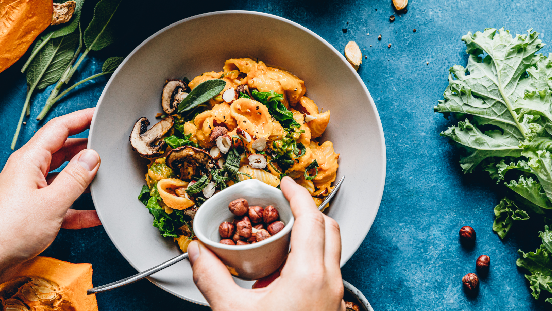
ESG commitments
With diet related diseases some of the leading causes of death in the world, and the spread of an ultra-processed Western-style diet across the world, the need for appropriate nutrition is now more important than ever. In fact, a recent report released in November 2024 suggested the UK’s food system is costing GBP268 billion per year in healthcare and other related costs, due to diet-related disease.
While in Australia the Australian Burden of Disease Study 2024 highlighted in December 2024 that diet was one of the leading risk factors contributing to disease burden in Australia.
Industries involved in food production and large-scale catering can make a real difference to people’s health and wellbeing. With diet and nutrition such key players in health, the wider food industry has a responsibility to consider the contribution their foods and food products have on people’s health.
While it is not the responsibility of the airline and catering industry to make people eat well (of course people have autonomy over their own diets and the foods they like to eat), the weight and space constraints onboard mean passengers have very limited choice of what and when they eat. This means decisions by airlines and caterers on what to serve in the airport and onboard are becoming even more important.
Making meals more nutritious does not necessarily mean a complete overhaul of menus or banning certain meals being served. With millions of meals served by the industry annually, even small changes to recipes or brands served can have a large impact on health and wellbeing. For example in 2021 a popular supermarket in Australia amended recipes for their white bread and rolls, reducing salt content by up to 25%. This resulted in 76 tonnes of salt being removed from the food supply.
The group, Action on Salt, have also estimated that reducing salt content in breads in the UK by 6% would remove approximately 900 tonnes of salt from the UK diet per year. These are important examples of how even small recipe reformulations for sugar, salt, fat and additives (or careful choice of brands to serve onboard) can have significant impacts for diet and health and is one strategy airlines and caterers engage in to provide more nutritious and healthy food for passengers.
Opportunity cost
Social media has been a game changer in the way we communicate and consume information. Information is easily accessible and universal, and anyone can generate or engage with information. Searching online for information on people’s experiences of food is popular, especially when it comes to food and travel. People post their experiences of food when flying and in lounges on social media, and many people read these posts before they travel.
There have been examples where people have posted online their poor experiences of food onboard and it has been picked up by traditional media, amplifying it even further. For example Qantas recently found themselves on the receiving end of negative attention regarding the quality of their food while flying and in their lounges which stemmed from passengers posting about it.
Negative food experiences now have the potential to reach large audiences quickly which can cause brand damage that extends beyond word-of-mouth whinging to family and friends that traditionally may have occurred prior to the era of social media. While budgets are tight and removing say a few tomatoes from a salad, or serving a slice of pizza instead of a chicken and vegetable stir fry can save money, consider the opportunity cost.
How much could it cost an airline if the poor food quality or unhealthy meal goes viral negatively all for a small financial saving per meal. The lost revenue could be much more if food becomes a larger part of the purchasing decisions for flights and information online continues to build about people’s experiences with food served onboard.
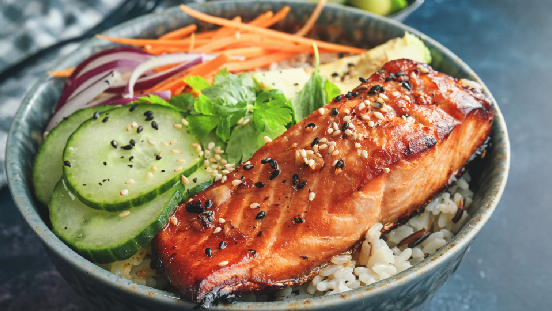
The way forward
This is an exciting time for airlines and caterers to consider nutrition in their offerings and passenger education, however execution is key. Just putting one salad on the menu onboard surrounded by junk foods or ‘comfort’ foods is not enough to gather a good understanding of passengers’ preferences for ‘healthy food’.
Food consumption is complex and influenced by many factors. I always remind clients that while nutrition is a science, eating is a behaviour. Just because a food is considered nutritious does not guarantee that people will eat it or want to eat it. Therefore, it is crucial to integrate nutrition into the types of foods that passengers enjoy eating onboard. This approach helps ensure that consumer preferences for nutritious foods are met, while also aligning with passenger food expectations and likes.
While industry surveys like NPS and CSAT provide insights into passenger experiences, and trend reports keep the industry informed about emerging interests and needs, it is essential to delve deeper into passenger preferences and behaviours concerning food. Published literature into passenger food behaviours onboard and real-world data from sources such as social media can help provide a comprehensive picture of passenger preferences when it comes to nutrition and food onboard. Viewing food and beverage services with a nutrition lens by nutrition professionals can provide airlines and caterers with powerful insights to help work towards solving many challenges or contributing to innovation.
